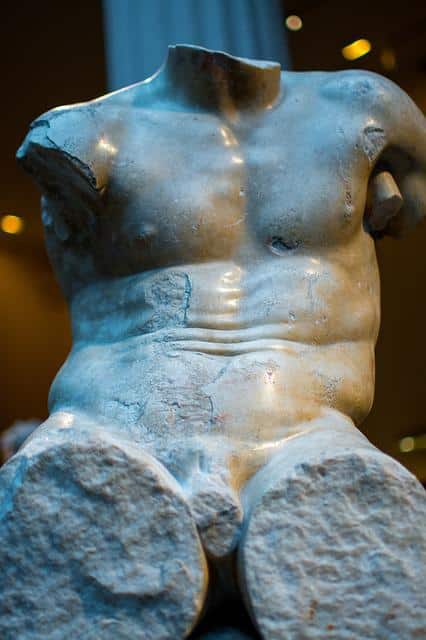
The torso is the trunk of a person.
Torso is a concept that refers to the trunk of the body of a human being. The torso, therefore, is the body without the legs, arms and head.
For example: “Yesterday I was sunbathing without a shirt and I burned my torso,” “The referee called a 'hand', but in reality the ball hit the defender's torso,” “As the young man covered his head with his arms, “The aggressor decided to start hitting him in the torso.”
Location and composition of the torso
If we analyze the torso in the context of the entire body, we can say that the head is located on it. On the sides, on the other hand, appear the arms (in the upper area) and the legs (in the lower area).
The torso is made up of the thorax and the spine . In this way, many of the body's most important organs are contained in the torso: the kidneys , liver , stomach , lungs and heart , among others.
Nowadays, most men have a special interest in muscularizing and strengthening their torso, in order to be able to boast an enviable body and physique. Therefore, they resort to performing sit-ups as well as other exercises such as segmental rotations, push-ups, plank poses, squats and lunges.

The statue that has no head or limbs is called a torso.
a type of statue
Statues that lack limbs and a head are called torsos: “A Greek torso is displayed at the entrance to the museum,” “In this room we can see ten paintings, a bust and a torso,” “Archaeologists believe that the torso is about three thousand years old.”
In this context, one of the best-known torsos is the so-called Belvedere Torso . It is a work by Apollonius of Athens that was found in the 16th century .
At first it was thought that it could be an original statue, however, as a result of the latest tests that have been carried out, it has gained more weight that, in reality, it is a copy of another older artistic work, which would be dated to the 2nd century BC
Other famous torsos
In the same way, we cannot forget that within the history of art there are many other important torsos, as would be the case, for example, of the work titled Torso de Hombre , which was made in the 19th century by Jules Desbois, one of the best-known collaborators of the famous sculptor Rodin. This work is located in what is the Musée d'Orsay in Paris and is considered to be very reminiscent of the aforementioned Belvedere Torso.
In Spain we must highlight the existence of a very important work within what is Iberian art. We are referring to the so-called Warrior Torso , which represents the trunk of an aristocrat or prince in which a breastplate in the shape of a wolf's head stands out. It is considered to be from the time of the Scipios and is usually found in the Monographic Museum of the Alcudia Foundation (Alicante).
Torso de Fruela I , meanwhile, is a sculpture by Miguel Berrocal found in the Spanish city of Oviedo . It was built in bronze in homage to an 8th century monarch.
